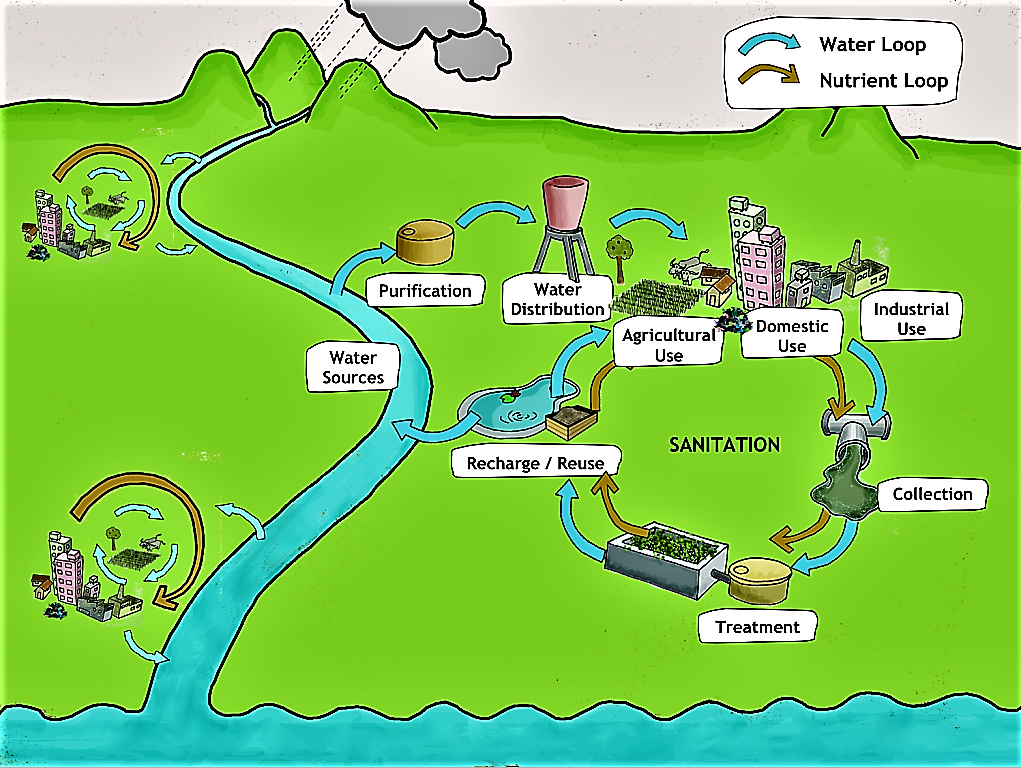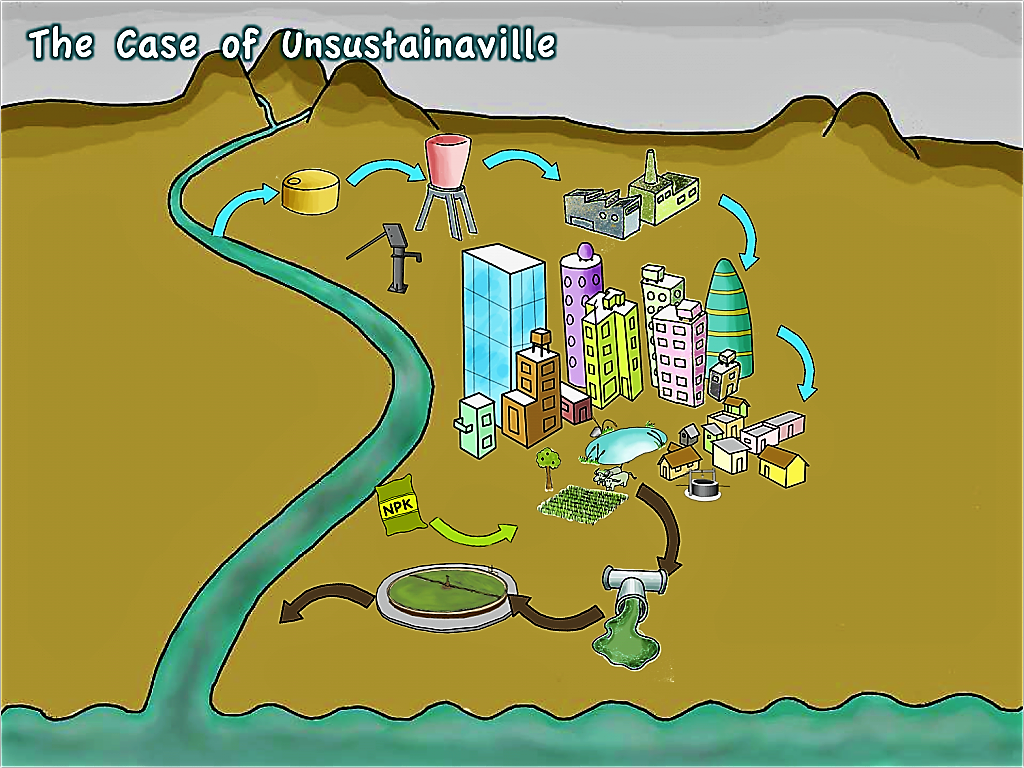What is ”Understand Your System”?
This section should allow you to get an overview of your local water and nutrient cycle. It will help you to identify root causes, and how problems are linked, thus giving you and a deeper understanding of the interrelationships between the water resources management, sanitation and agriculture in your specific locality.
How can you use “Understand Your System”?
Getting a common understanding of your sanitation and water situation/problem: After you got a first understanding of the situation on your own, you need to redo the exercise in a workshop together with local stakeholders. This is crucial to get a common understanding of a problem right at the outset and to avoid future misunderstandings (see also the exploring tools´s factsheets).
Get to know where you will find further information on your issue in the toolbox: Going through this tutorial will get a better understanding of where you will find what type of approaches, tools or technologies and which are most useful to you.
Understand how the toolbox works for you: If you are using this toolbox for the first time, this tutorial is the best way to get a quick, but quite comprehensive first overview of your local water and sanitation situation and shows you how the toolbox could help you.
Understand your own Water and Sanitation System

The graph show the general system approach of the Sustainable Sanitation and Water Management Toolbox. It is a simplified and idealised version of the water and nutrient loop that puts humans at the centre. Water coming from water sources is purified, distributed and used in agriculture, households and industry. By using water for these different purposes, nutrients are introduced into the water cycle (e.g. through wastewater, but also in runoff in agricultural systems, etc.). Wastewater, in order to be treated, is collected. The treated wastewater is reused or used to recharge water sources. Nutrients are reused beneficially to produce food or animal feed, thereby not polluting aquatic ecosystems. In this way, both the water and the nutrient loop are closed.
Now, your system would probably look different (if not, you would not need this toolbox). To help you to get an idea where to start, go through this tutorial step by step. To get a first overview, it should be sufficient to carry out this exercise at your desk or at home, using your local knowledge, and discussing it with your work colleagues or friends. In a second step, you can do it together with stakeholders and experts.
The Case of Unsustainaville

To help you carry out this analysis, we have created the City of Unsustainaville. As the name says, not everything is running as nicely and smoothly in Unsustainaville as in the picture above. There are many problems - some of which you may encounter in your own place as well. This may help you to detect your own problems. For every step, you will find a picture of Unsustainaville, where the current steps and problems are highlighted.
Next Step
Go to Next Step -----> Outline of your Area
